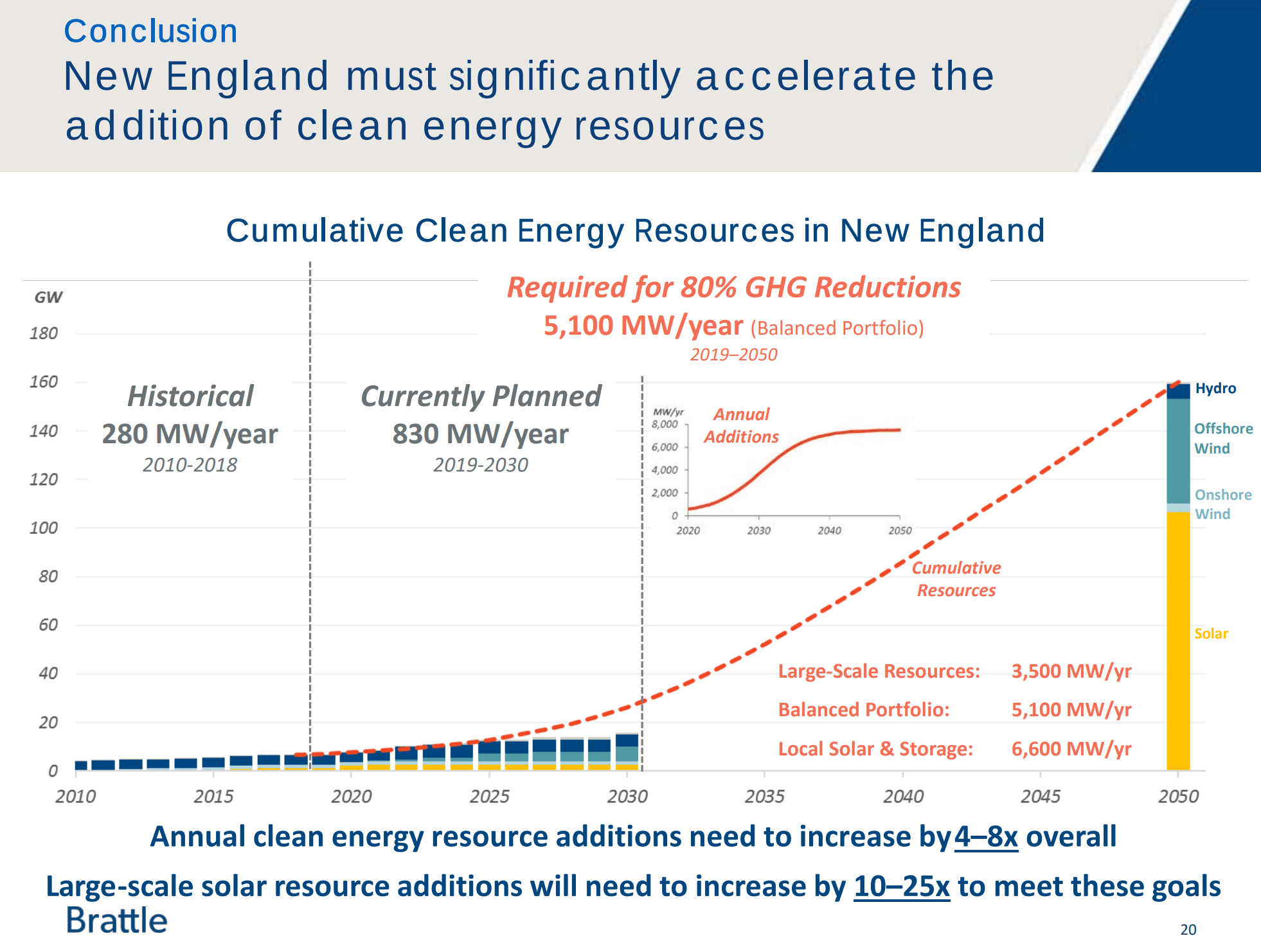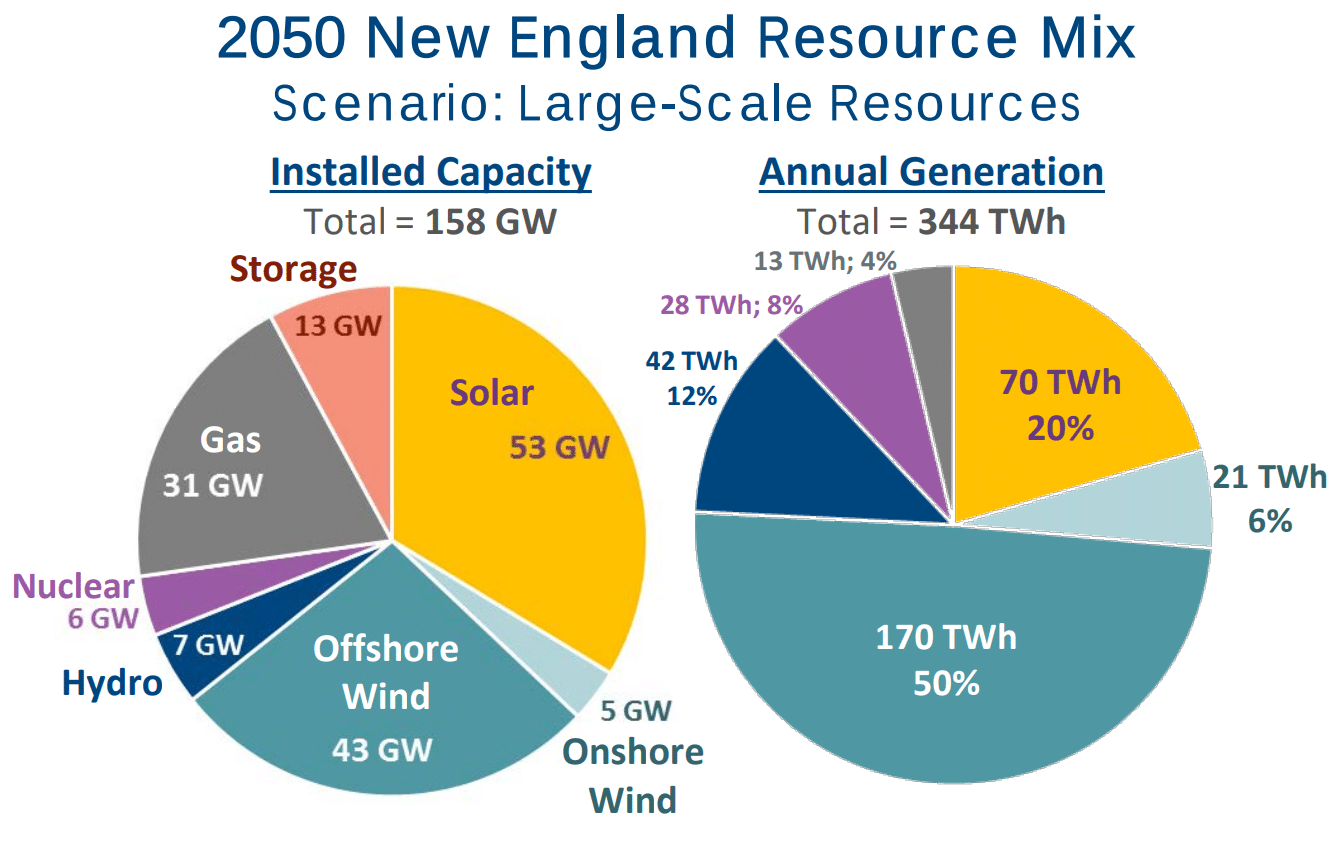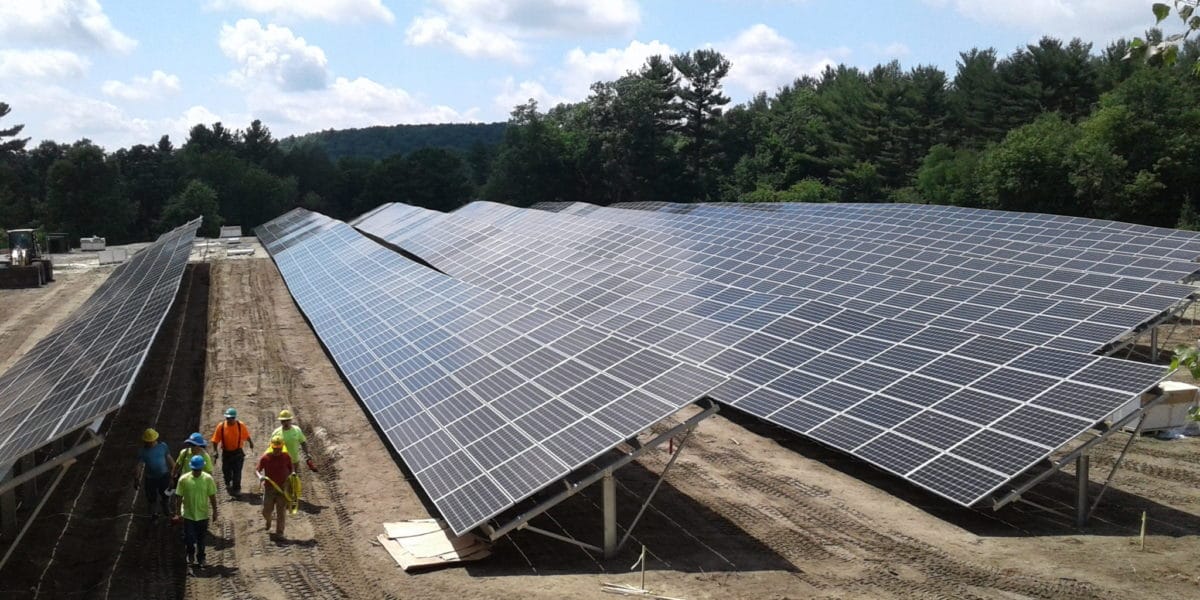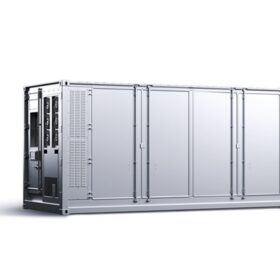The Coalition for Community Solar Access has commissioned a report (pdf) by the Brattle Group that estimates that New England will need to add between 4 and 7 gigawatts (GW) of new clean energy capacity every year to achieve an 80% reduction in greenhouse gas (GHG) emissions by 2050. As shown in the inset graph titled “annual additions” within the below image, in the years between 2019 and 2050, renewable capacity will need to increase rapidly from the current pathway of 0.8 GW/year to up to 7 GW/year of new renewables each year, including 2–5 GW of solar and 2–3 GW of wind.

The six-state region emitted approximately 156 million metric tons of carbon dioxide equivalents (MMTCO2e) of GHGs in 2016 (Massachusetts – 44%, Vermont – 4%, Rhode Island – 7%, New Hampshire – 10%, Maine – 11% and Connecticut, 24%). Of that volume, transportation was responsible for 45% of emissions, residential use 17%, electric power 15%, commercial emission were 10%, non-energy 7% and industrial 6%.
The document notes that nearly 100% of residential and commercial demand can be electrified.
The seemingly most optimal of models (below image), focusing on large-scale resources, would require about 3.5 GW/year of clean energy additions – about 50% being solar, 40% offshore wind, and 10% between onshore wind plus hydroelectricity. This model would mean a total of 158 GW fo capacity deployed, with 53 GW of solar power and 13 GW of energy storage being included in this model. Of total generation, 20% would come from solar power and 50% from offshore wind.
This model would require a regional large-scale transmission build out, as well as approximately 25% curtailment each year.

A second model focusing more so on distributed solar resources, suggests that we’d need triple our solar power deployed to 160 GW as compared to the prior model, and more than quadruple the energy storage deployed to 48 GW. This model would bring solar power right to 50% of total electricity generation, and lead to a higher 29% of renewable electricity curtailment (mostly in the summer months). A total of 285 GW of capacity, including the energy storage, would be deployed in this model.
A third balanced portfolio will require 219 GW of electricity generation, with just about 50% of that being solar, and 28 GW of energy storage to capture the excess daytime solar.
All of these models suggest that the system will still need 31 GW of gas plants to stay online.
Technically speaking, per the Brattle report, the region can potentially generate slightly more than 3,000 TWh/year – which is 10-15 times more than the project 214-286 TWh/year that is projected as needed.

In order to meet these targets, clean energy deployments will have to grow by 20% between 2019-2030, and then 9% a year through 2050. This value happens to be lower than the globe’s average of 11% per year for wind, 45% per year for offshore wind and 41% per year for solar PV over the past twenty years.
Once we complete our 4-5%/year replacement of most of our fossils by 2050, there will need be a constant installation of 7.5 GW/year of clean energy to replace retiring clean energy capacity and feed further population growth.
This content is protected by copyright and may not be reused. If you want to cooperate with us and would like to reuse some of our content, please contact: editors@pv-magazine.com.








By submitting this form you agree to pv magazine using your data for the purposes of publishing your comment.
Your personal data will only be disclosed or otherwise transmitted to third parties for the purposes of spam filtering or if this is necessary for technical maintenance of the website. Any other transfer to third parties will not take place unless this is justified on the basis of applicable data protection regulations or if pv magazine is legally obliged to do so.
You may revoke this consent at any time with effect for the future, in which case your personal data will be deleted immediately. Otherwise, your data will be deleted if pv magazine has processed your request or the purpose of data storage is fulfilled.
Further information on data privacy can be found in our Data Protection Policy.